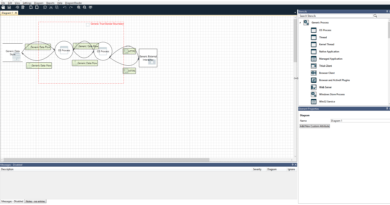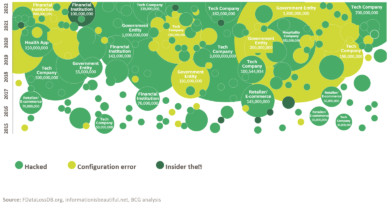DevsecOps: Advantages of Multi-Level Application Security Testing
What is DevSecOps?
DevSecOps is a methodology that integrates security testing and practices into the development and deployment process. It’s an approach that involves the collaboration of developers, operations, and security teams, to ensure that security is built into the application from the start. This practice of integrating security into the development pipeline enables teams to detect vulnerabilities earlier in the development process, thereby reducing the risk of security breaches.
To achieve a robust security posture, it’s essential to implement multi-level application security testing. Multi-level application security testing involves a combination of static analysis, dynamic analysis, and interactive application security testing. Each of these testing techniques has its unique benefits and can be used to identify different types of vulnerabilities.
===Benefits of Multi-Level Application Security Testing
The use of multi-level application security testing provides several benefits, including:
- Improved Security Posture: Multi-level application security testing provides multiple layers of security, which enhances the overall security posture of the application.
- Better Coverage of Vulnerabilities: By using different testing techniques, multi-level application security testing can identify a broad range of vulnerabilities, including those that might have been missed with a single testing technique.
- Faster Identification of Vulnerabilities: Multi-level application security testing enables early detection of vulnerabilities, which leads to faster remediation and reduces the risk of security breaches.
- Reduced False Positives: By using multiple testing techniques, the number of false positives is reduced, which saves time and resources in the remediation process.
- Cost-Effective: Multi-level application security testing is cost-effective. It helps to identify vulnerabilities early in the development process, which is less costly than waiting until after the application is deployed.
- Compliance: Multi-level application security testing helps organizations comply with regulatory requirements and standards.
===Level 1: Static Analysis Testing
Static analysis testing is the first level of multi-level application security testing. It involves scanning the application’s source code, binaries, and other related files to identify vulnerabilities. This type of testing is useful in identifying vulnerabilities that are difficult to detect through other means. Static analysis testing can identify vulnerabilities such as buffer overflows, SQL injection, and cross-site scripting.
Static analysis testing is automated, and it can be integrated into the development pipeline, making it a cost-effective and efficient way of detecting vulnerabilities early in the development process.
===Level 2: Dynamic Analysis Testing
Dynamic analysis testing is the second level of multi-level application security testing. It involves testing the application while it’s running to identify vulnerabilities that are not detectable through static analysis. Dynamic analysis testing can identify vulnerabilities such as injection flaws, broken authentication, and session management issues.
Dynamic analysis testing is typically performed using automated tools that simulate real-world attacks. The tools send requests to the application, analyze the responses, and identify vulnerabilities.
===Level 3: Interactive Application Security Testing
Interactive Application Security Testing (IAST) is the third level of multi-level application security testing. IAST is a combination of static and dynamic analysis testing. It involves testing the application while it’s running, just like dynamic analysis testing. However, IAST also analyzes the application’s source code, just like static analysis testing. This combination of testing techniques enables IAST to identify vulnerabilities that are difficult to detect through other means.
IAST tools can identify vulnerabilities such as code injection, authentication flaws, and sensitive data disclosure. IAST is typically automated and can be integrated into the development pipeline.
===Conclusion: Why DevSecOps is Critical for Security
In conclusion, DevSecOps is a methodology that integrates security into the development and deployment process. Multi-level application security testing is an essential aspect of the DevSecOps methodology. Multi-level application security testing involves using a combination of static analysis, dynamic analysis, and interactive application security testing. This approach provides multiple layers of security and helps to identify a broad range of vulnerabilities. This early detection of vulnerabilities reduces the risk of security breaches and helps to improve the overall security posture of the application. By implementing DevSecOps and multi-level application security testing, organizations can build more secure applications and comply with regulatory requirements and standards.



